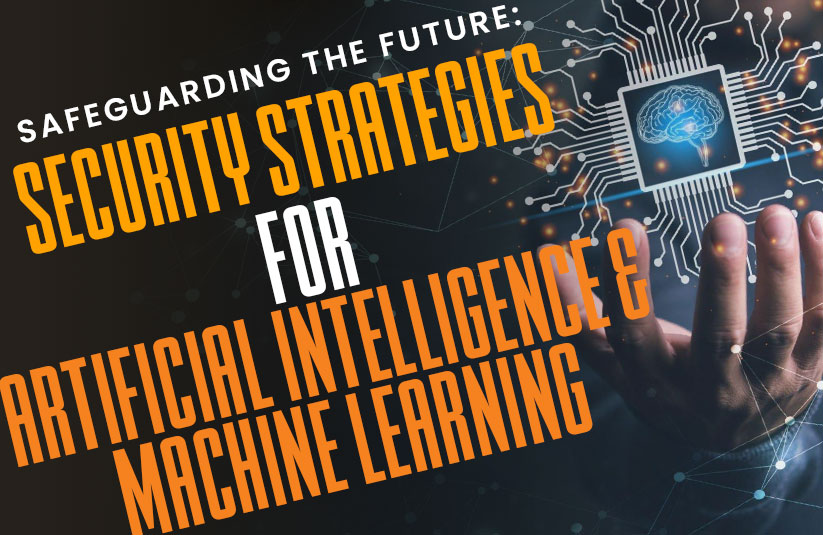In the ever-evolving landscape of technology, artificial intelligence (AI) and machine learning (ML) have emerged as powerful tools that reshape industries and revolutionize human capabilities. However, along with their immense potential, AI and ML also bring forth unique security challenges.
As organizations increasingly embrace these technologies, it becomes imperative to establish robust security strategies that safeguard the integrity, confidentiality, and availability of AI and ML systems.
This article delves into the essential security considerations and strategies to mitigate risks in the realm of AI and ML.
5 Effective Strategies to Secure Your Artificial Intelligence and Machine Learning
- Protecting the AI and ML Infrastructure
The foundation of AI and ML systems lies in the underlying infrastructure. To ensure the security and integrity of these technologies, organizations must establish a strong security framework that encompasses several key aspects.
- Secure Data Storage: Data is the fuel that powers AI and ML algorithms. Encrypting data at rest and in transit, implementing access controls, and employing secure storage solutions are crucial for protecting sensitive information.
- Robust Network Security: Securing the network infrastructure, including firewalls, intrusion detection systems, and network segmentation, is vital to thwart unauthorized access and potential data breaches.
- Regular Patching and Updates: Keeping AI and ML infrastructure up to date with the latest security patches helps prevent vulnerabilities and reduces the risk of exploitation.
- Ensuring Data Privacy and Ethical Usage
As AI and ML systems process vast amounts of data, ensuring data privacy and ethical usage becomes paramount. Organizations must adopt rigorous practices to protect the privacy of individuals and maintain ethical standards.
- Data Anonymization: Implementing techniques such as data masking, tokenization, and differential privacy ensures that sensitive personal information remains anonymous, reducing the risk of privacy violations.
- Transparent Data Governance: Clearly defining data usage policies, obtaining informed consent, and ensuring compliance with relevant regulations, such as the General Data Protection Regulation (GDPR), establishes trust and protects individual rights.
- Bias Mitigation: Bias in AI and ML algorithms can lead to unfair outcomes and perpetuate societal inequalities. Regularly monitoring and auditing algorithms, using diverse and representative training datasets, and employing fairness metrics can help mitigate bias and promote ethical decision-making.
- Secure Model Development and Deployment
During the development and deployment of AI and ML models, it is essential to prioritize security measures to detect potential hazards.
Implementing a secure development lifecycle, conducting thorough model verification and validation, and enhancing model interpretability are crucial steps. These practices not only ensure the reliability and accuracy of the models but also enable organizations to detect potential vulnerabilities or biases that could pose security risks.
The security of AI and ML models during development and deployment is crucial to prevent malicious activities and maintain system integrity.
- Secure Development Lifecycle: Implementing secure coding practices, conducting code reviews, and integrating security testing throughout the development lifecycle minimizes vulnerabilities that could be exploited by attackers.
- Model Verification and Validation: Rigorously testing and validating AI and ML models before deployment helps ensure their reliability, accuracy, and resistance to adversarial attacks.
- Model Interpretability: Enhancing the explainability and interpretability of AI and ML models allows for a better understanding of their decision-making processes and helps identify potential vulnerabilities or biases.
Using state-of-the-art security systems like Protex AI can help with this, as you can detect potential hazards with Protex AI.
- Defending against Adversarial Attacks
Adversarial attacks pose a significant threat to AI and ML systems. These attacks aim to manipulate or deceive AI models by introducing malicious inputs. To defend against such attacks, organizations can employ the following strategies:
- Adversarial Training: Training models with adversarial examples helps improve their resilience to attacks and enhances their ability to detect and reject malicious inputs.
- Robust Input Validation: Implementing rigorous input validation techniques, including anomaly detection and outlier analysis, can help identify and filter out potentially malicious inputs.
- Continuous Monitoring: Implementing real-time monitoring and anomaly detection mechanisms enables prompt detection of adversarial activities, allowing for quick response and mitigation.
- Building a Culture of Cybersecurity Awareness
A company’s safety condition is only as powerful as its weakest link. Promoting a culture of cybersecurity awareness and instilling good security practices among employees is crucial for the overall protection of AI and ML systems.
- Training and Education: Conducting regular training sessions and workshops to educate employees about the risks, best practices, and emerging threats associated with AI and ML ensures they remain vigilant and proactive in recognizing and reporting potential security incidents.
- Incident Response and Recovery: Establishing an effective incident response plan, conducting regular drills, and creating a clear chain of command facilitates swift action during security incidents, minimizing potential damage and recovery time.
- Collaboration and Knowledge Sharing: Encouraging collaboration between cybersecurity teams, data scientists, and developers fosters a holistic approach to security, enabling the identification and mitigation of emerging threats and vulnerabilities.
Conclusion
As AI and ML technologies continue to advance, the security of these systems must be prioritized. By implementing robust security strategies that protect the infrastructure, ensure data privacy and ethical usage, secure model development and deployment, defend against adversarial attacks, and foster a culture of cybersecurity awareness, organizations can mitigate risks and safeguard the future of AI and ML.
Embracing these strategies will not only bolster the resilience of AI and ML systems but also inspire trust in their adoption, paving the way for a secure and transformative future.
Remember, securing AI and ML is an ongoing journey, requiring constant adaptation and vigilance. By staying ahead of emerging threats and evolving security practices, organizations can effectively harness the potential of AI and ML while keeping their systems and data safe from harm.













